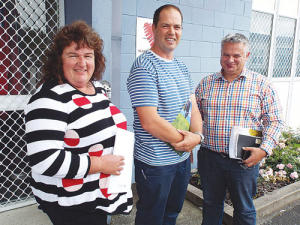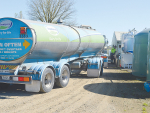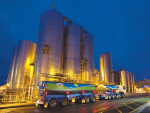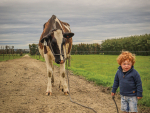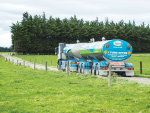Fifty dairy farmers — mostly Fonterra shareholders – and others met recently in Morrinsville to discuss DIRA’s role in milk production in 2018.
Annie Hindle, of MPI, chaired.
Hindle said legislative changes are likely to focus on five topics: the DIRA open entry and exit requirements placed on Fonterra, regulated milk supply to large processors, base milk price calculations, regulated milk supply to Goodman Fielder and smaller processors and DIRA expiry provisions.
The subject of open entry and exit caused the most discussion, given that Fonterra is obliged to take any milk offered on the same terms and conditions offered to existing suppliers.
Many in the audience said other milk companies should be subject to the same legislation, should it continue.
Fonterra had been forced to install a lot of extra processing plant to cope with possible supply, yet its suppliers could freely leave the co-op to supply a competitor, then realise the grass was greener at Fonterra and return with no penalty, placing a direct cost on remaining suppliers.
Also discussed at length was the intention of DIRA as giving oversight in a market where one entity was dominant. The question arose, when does dominance cease? Is it at the point when Fonterra controls no more than 51% of the market? Because the share will always remain fluid as new companies come and go in the sector.
The closing discussion on this subject centred on the seeming dysfunction that allows DIRA to kick in when a milk processor fails, so guaranteeing the failed company’s farmer-suppliers a backstop in being able to supply Fonterra.
Regulations controlling the supply of raw milk also created much discussion. The act dictates that Fonterra is obliged to supply start-up companies with up to 50 million litres of milk at a regulated price. Audience consensus was that this was a positive move allowing new processors to add to employment in rural communities, producing positive news at a time when NZ dairying was getting bad press. But foreign ownership of such companies can cause a bad smell, especially because profits go offshore.
The audience was glum about Fonterra having to supply 250 million litres of milk to Goodman Fielder — dominant in the NZ liquid milk market — which pushed its excess onto the global market. But concern was raised that any move to remove Goodman Fielder’s right to take 250mL might cause negative publicity and cries about a lack of competition.
The consensus on wholesale milk pricing was that the mechanism is robust, open and generally works well. The mechanism is regularly audited by PWC and consistently reviewed by the Commerce Commission, allowing Fonterra to regularly notify milk price, “allow[ing] farmers and the rural community to make informed decisions,” said Brent Goldsack, a dairy farmer and Fonterra director.
The question was put whether other dairy processors should also be required to publish their milk prices regularly and openly.
Questions remained at the meeting’s close: is DIRA still required? Should the milk supply process become unregulated or should DIRA be rewritten to reflect the fact that Fonterra is now taking only 80% of NZ milk versus 96% when it started?
Submissions on these close on February 8, 2019; MPI will collate responses then will pass its recommendations to a multi-party select committee in May or June. This group will decide on any need for legislative change, new legislation will be drafted by late 2019 to pass into law early 2020.
Background to the Act
The Dairy Industry Restructuring Act 2001 (DIRA) followed the 1999 proposal to form a new co-op out of New Zealand Dairy Group and Kiwi Co-Operative Dairy Co, as happened in 2001.
The new co-op was destined to take 96% of NZ’s milk production.
DIRA was intended to ensure that the new co-op didn’t use its monopoly position to influence control of prices, and to ensure that milk production and farming systems could contribute to more value for the industry.
Over the ensuing 17 years, new processors have entered the market, e.g. Synlait, OCD and Miraka.
DIRA is now under review, typically questioning, how effective is the act in achieving its regulatory purpose?
Is it still fit for purpose? Is it creating unintended consequences? Does it need to stay in force any longer?

